The Phyang Monastery, known as Phyang Gompa, sits in the heart of Ladakh’s rugged mountains and is one of the most significant Buddhist places with a gateway to the rich cultural and spiritual heritage of the region. Founded in the 16th century, under the Gelugpa sect, it boasts its architectural majesty, tranquil environment, and numerous festivals. Whether one is coming to Ladakh for spiritual solace or only for a look at the fabulous scenery of Ladakh, Phyang Monastery has become one of the places that should be a must-visit.
Phyang Monastery Location

Photo: Darshancg / Wikimedia Commons
At a distance of approximately 20 kilometres from Leh, Phyang Monastery is on a hilltop in the village of Phyang offering spectacular views of the mountains and valleys. Conveniently located on the Srinagar-Leh highway, this monastery is accessible to travellers from various parts of India and abroad.
Suggested Read: Best Food In Leh
How To Reach Phyang Monastery
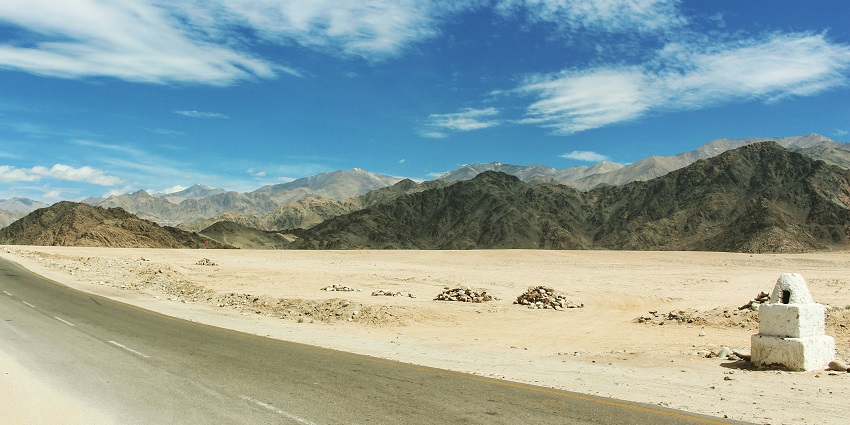
By Road: You can hire some taxis and bikes to reach the monastery, which will take approximately 30 minutes along scenic routes that showcase the beauty of Ladakh’s landscapes. There are local buses that travel frequently between Leh and Phyang and they are economical for budget travelers.
By Rail: There is no direct railway link to Phyang Monastery. The nearest major railway station is in Jammu Tawi, 700 km from the monastery. Buses and taxis are available from Jammu to Leh and then local transport to the monastery.
By Air: The nearest airport is Kushok Bakula Rimpochee Airport in Leh, which is very well connected to major cities in India. On reaching Leh, it is easy to find taxis that will take you to Phyang Monastery in about 30 minutes.
Places To Visit Around Phyang Monastery
1. Leh Palace
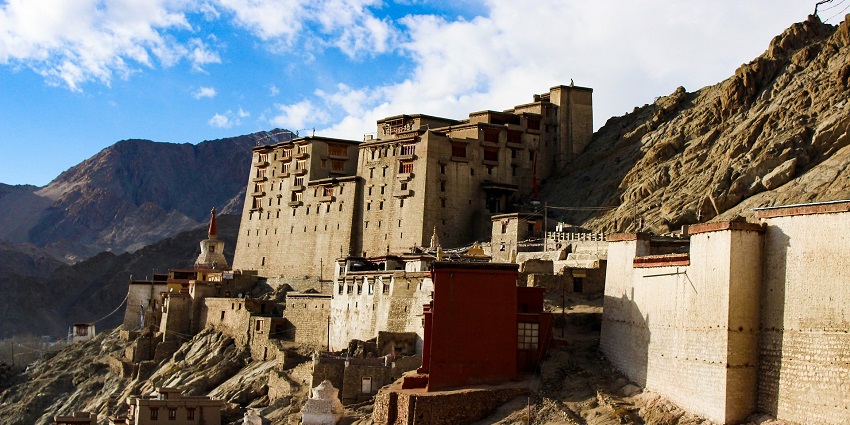
Photo: Advrider6510 / Wikimedia Commons
Leh Palace, built by King Sengge Namgyal in the 17th century, is an iconic nine-story structure overlooking the Leh town. Modelled after the Potala Palace in Lhasa, it is a fine example of medieval Tibetan architecture. The palace’s museum houses artefacts, including old paintings and ceremonial dresses, offering a glimpse into Ladakhi royalty. From the rooftop, visitors can enjoy panoramic views of the Leh Valley and surrounding snow-clad mountains, making it a popular destination for history and photography enthusiasts.
Location: Namgyal Hill Leh Jammu and Kashmir, 194101
Best Time To Visit: April to October
Entry Fees: Free
Suggested Read: Adventure Sports In Ladakh
2. Hemis Monastery
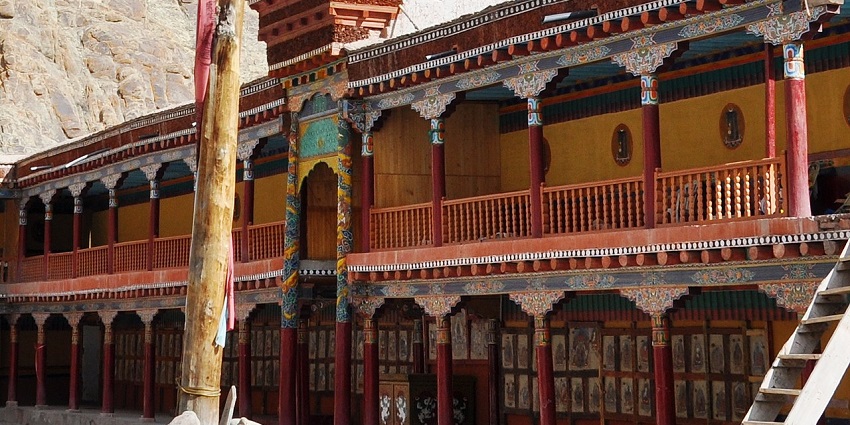
Photo: Prof Ranga Sai / Wikimedia Commons
Hemis Monastery, 45 kilometers from Leh, is one of the largest and wealthiest monasteries in Ladakh. Belonging to the Drukpa lineage of Buddhism, it is renowned for its annual Hemis Festival, which celebrates the birth of Guru Padmasambhava. The monastery boasts a vast collection of ancient relics, including thangkas, statues, and Buddhist scriptures. Visitors are particularly drawn to its intricate murals and the giant thangka, unfurled only during the festival. Hemis is a serene and spiritually enriching site.
Location: Leh district, Ladakh, India
Best Time To Visit: May to September
Entry Fees: Free
3. Thiksey Monastery
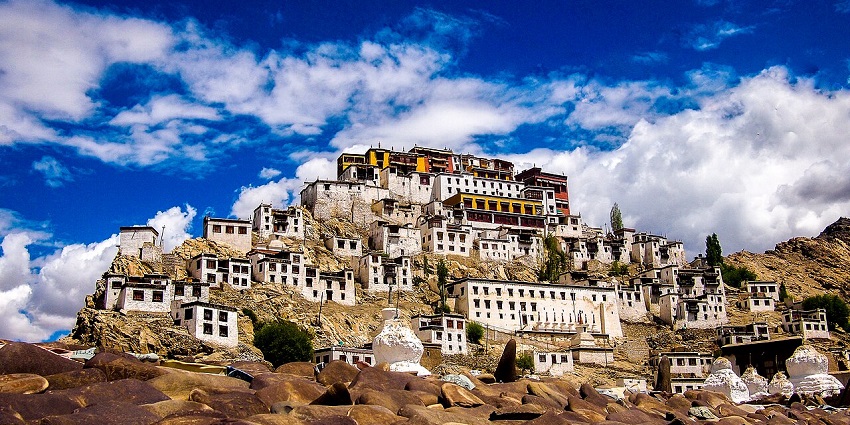
Photo: Caesardeka / Wikimedia Commons
Thiksey Monastery, perched on a hill overlooking the Indus Valley, bears a striking resemblance to the Potala Palace in Tibet. This 12-story complex is an active monastery, home to an impressive 15-meter statue of Maitreya Buddha. Visitors flock here to witness breathtaking views of the surrounding landscapes, particularly at sunrise and sunset, when the light bathes the area in a magical glow. The monastery also offers a serene environment for spiritual reflection amidst its historic architecture.
Location: Thiksey, Ladakh 194201
Best Time To Visit: May to October
Entry Fees: Free
Suggested Read: Puga Valley In Ladakh
4. Nubra Valley
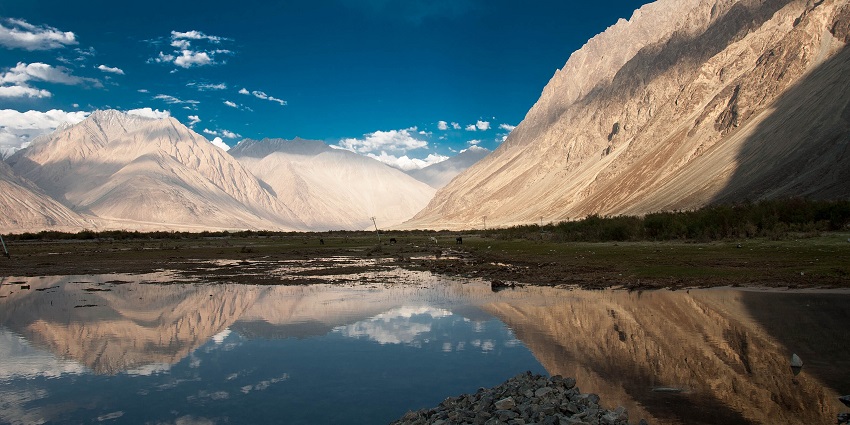
Photo: vaidyanathan / Wikimedia Commons
Nubra Valley is a spectacular region, accessible through the famed Khardung La pass. Known for its contrasting landscapes of lush greenery, sand dunes, and rugged mountains, it’s also home to the rare double-humped Bactrian camels. Adventure enthusiasts can enjoy trekking, camel rides, and camping, while those seeking cultural experiences can visit local villages and monasteries. Its serene environment, combined with breathtaking beauty, makes Nubra Valley a must-visit for explorers and nature lovers alike.
Location: Nubra district, Ladakh
Best Time To Visit: June to September
Entry Fees: Permit required
5. Pangong Lake

Photo: bibek / Wikimedia Commons
Pangong Lake, one of Ladakh’s most iconic sites, is renowned for its pristine, azure waters that reflect the surrounding mountains. Situated at a high altitude, the lake’s colors change dramatically with the sun, ranging from deep blue to turquoise. Visitors enjoy the stunning views, particularly at sunrise and sunset. A 5-hour drive from Phyang, Pangong is also a popular spot for camping under the stars, offering a tranquil retreat and unparalleled photo opportunities in Ladakh’s wilderness.
Location: Leh district, Ladakh
Best Time To Visit: June to September
Entry Fees: Permit required
Suggested Read: Hot Springs In Ladakh
Where To Stay
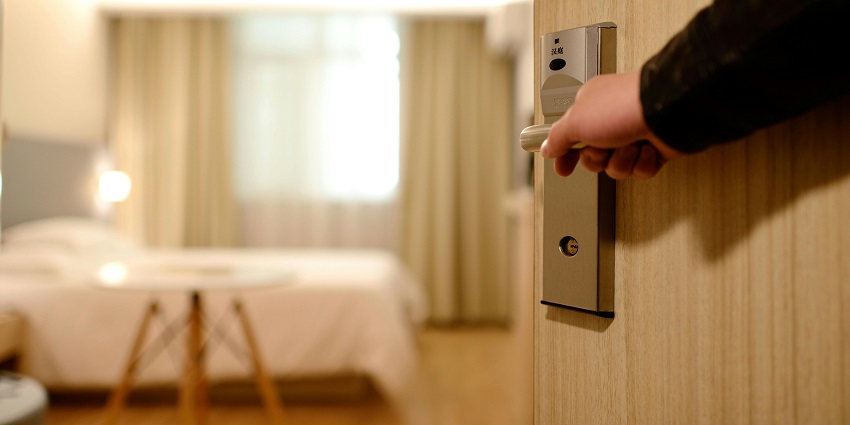
Photo: Pixabay / Pexels / Image For Representation Only
There are several options for accommodation close to the Phyang Monastery, ranging from budget-friendly to more expensive based on the choice of the traveller. Astro Stays offers a basic experience close to the monastery while providing the most serene environment. Luxury is offered by The Grand Dragon Ladakh near Leh with comfortable amenities and stunning views that make it the best place for rest after a day of discovery. Phyang Homestay also allows visitors to stay and experience authentic Ladakhi hospitality, while knowing and understanding more about the culture and traditions.
Where To Eat
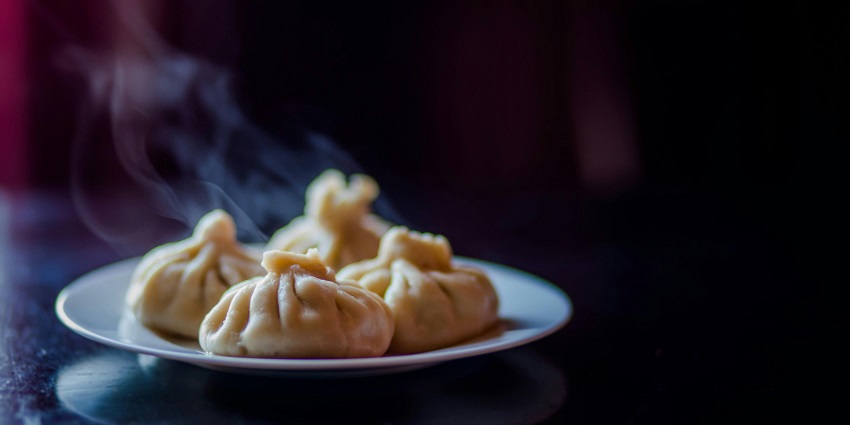
Photo: Natalie Bond / Pexels / Image For Representation Only
One can dine near the Phyang Monastery and savour the authentic Ladakhi and Tibetan cuisine. The Tibetan Kitchen is popularly known for its momos and thukpa, traditional dishes of Tibet, while Gesmo Restaurant is more about offering a wide variety of local and international dishes that are generally vegetarian. Chamba Restaurant is another nice spot, with different dishes of Indian and Chinese cuisine, so every traveller will find something delicious according to his taste.
Suggested Read: Discover The Famous Monasteries In Ladakh
Best Time To Visit
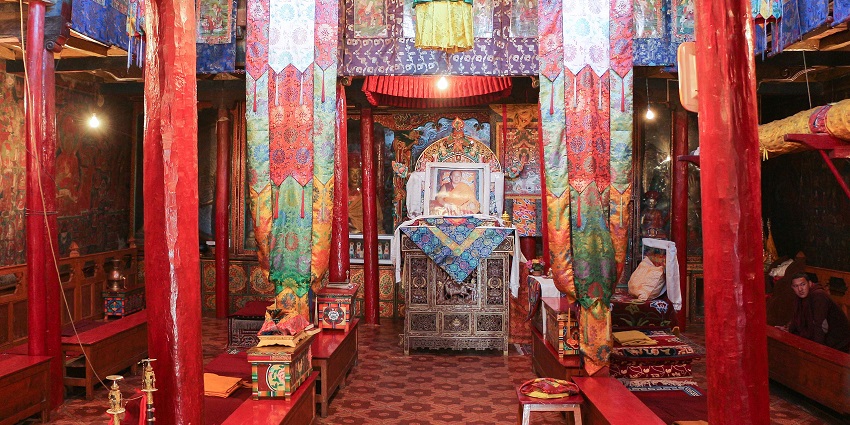
Photo: Bernard Gagnon / Wikimedia Commons
The summer months, beginning from May and up to August, are the best periods when weather is relatively warm and comfortable with lush landscapes. This time of the year also allows visitors to experience the annual Phyang Festival in July, which has cultural performances along with wonderful celebrations. Autumn, or September to November, is another good time to visit as fall colours enrich the beauty of the monastery.
Other Factors To Consider
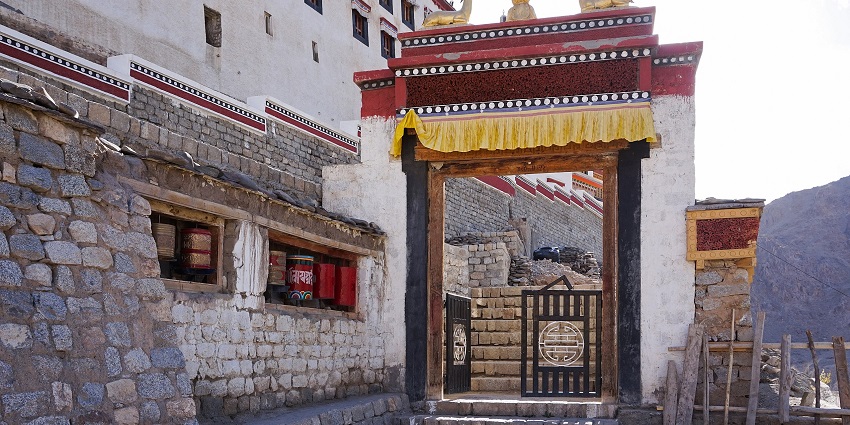
Photo: Bernard Gagnon / Wikimedia Commons
Tips For Travelers
- Maintain decorum in the monastery, dress modestly, and observe silence in prayer halls.
- The dry mountain air can dehydrate you quickly. Carry water and drink regularly.
- Spend a day or two in Leh to adjust to the altitude before exploring.
- Ladakh’s weather can be unpredictable. Dress in layers to adapt to changing conditions.
- Always ask for permission before taking photographs, especially of people or inside prayer halls
Suggested Read: Enhance Your Vacation With These Things To Do In Ladakh
Phyang Monastery is a peaceful retreat that not only holds the historical importance of the site but also provides peace, serenity, and a deep connection with Ladakhi culture. But for those who get to really spend their time inside Phyang Monastery’s ancient halls and take part in its festive ceremonies, they will learn to love the tranquility and beauty of this place.So pack your bags, prepare for an unforgettable journey, and let TripXL guide you.


 WhatsApp
WhatsApp
 Twitter
Twitter









